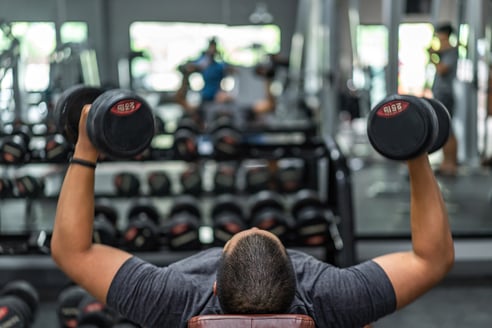 Let’s face it: building your own workouts isn’t always the easiest thing to do. Sure, you probably strike gold a few times a year and the exercises you choose seem to be flawless, from the balance of muscle groups worked to the flow of the routine that you get into. There is nothing better than having that program that just seems to get the job done.
Let’s face it: building your own workouts isn’t always the easiest thing to do. Sure, you probably strike gold a few times a year and the exercises you choose seem to be flawless, from the balance of muscle groups worked to the flow of the routine that you get into. There is nothing better than having that program that just seems to get the job done.
What Workout Program Should You Use When You’ve Taken Time Off from Training?
But let’s say that life happens and you took an extended time off from training due to school, work, or some other important reason (pandemic maybe?). So what now? Where do you go from here? The go-to for many individuals would be to jump right back into the same program they were doing before their long layoff. It worked great for them before their break, so it must be the best way to resume activity, right? More than likely, this might not be the most ideal situation to set yourself up for future success. When your body has become detrained from a long layoff, you run the risk of overtraining—which could possibly lead to those nagging injuries that linger throughout your rebuild process.
Find a Program That Balances Pushing and Pulling
To me, a GREAT training program is a delicate balance of “pushing” and “pulling” exercises. The general consensus of the “push-pull” method is that you alternate (or superset) upper-body push movements (for example, bench press, shoulder press) with upper-body pull movements (for example, bent-over rows, pull-ups). Even the great Arnold Schwarzenegger used this method to pack on loads of muscle when he was at the apex of bodybuilding. Now, are you Arnold? No. Are you trying to look like Arnold? Also no (more than likely). Below you will find another interpretation of the “Push-Pull” method that may better fit those who are restarting their exercise routine, or those who are looking to switch up their programming.
Benefits of Full-Body Workouts
As I mentioned before, the push-pull method often refers to two upper-body exercises from opposite muscle groups (for example, chest and back). The superior version (in my opinion) of this would be to couple either an upper-body push exercise with a lower-body pull exercise, or an upper-body pull exercise with a lower-body push exercise (see table below). This type of full-body workout allows for two main benefits:
- Ample rest time is allowed: While the upper body works, the lower body rests (and vice versa).
- There is potential for reduced soreness: Instead of hammering one muscle group for a ton of exercises, a more gradual stress is applied to the muscles over multiple workouts. It could also be a great option for returning to exercise or resistance training.
Movement Examples
If you think this type of workout might be what you are looking for, give it a shot. Choose one exercise from column 1 and one exercise from column 2. Alternate those two exercises for the desired number of reps and sets. When finished, either choose one exercise from the same two columns OR switch it up and choose one exercise from column 3 and one exercise from column 4. Remember, the ultimate goal is to match each push movement you perform with an opposite pulling motion.
| Column 1 | Column 2 | Column 3 | Column 4 |
|
Upper-body Push (chest/ |
Lower-body Pull (hips/ |
Upper-body Pull (back) |
Lower-body Push (quads) |
|
Bench Press |
Trap Bar Deadlift |
Pull-Ups |
Front Squat |
|
Strict Shoulder Press |
Slider Hamstring Curl |
TRX Inverted Row |
Step-ups |
|
Half-kneeling Shoulder Press |
Single-leg RDL |
Band Face Pull |
Lunges |
|
Push-up Variations |
Lateral Lunge |
Seated Row |
Split Squat |
|
“Jammer” Press |
Reverse Hyper |
Dumbbell Reverse Fly |
Wall Sit |
Adjust Your Program Periodically
As with most workout structures, adding wrinkles into the program every so often will allow you to continue the muscular adaptations that are occurring and keep you engaged. That could mean an adjustment to the number of reps, sets, or rest periods you are currently using, or simply choosing different exercises. The ways that you can tweak this kind of program are endless, and I believe that with great effort, you will see positive changes in whatever physical adaptation or change you are after.
This blog was written by Alex Soller, Athletic Performance Coach and NIFS trainer. To find out more about the NIFS bloggers, click here.

